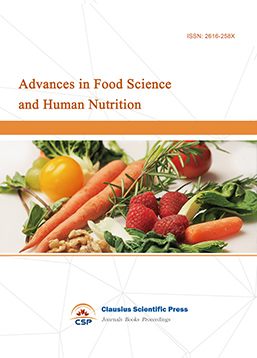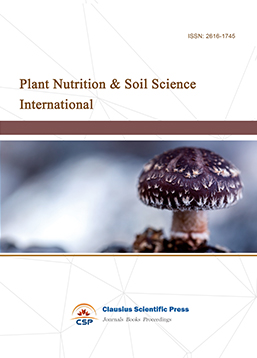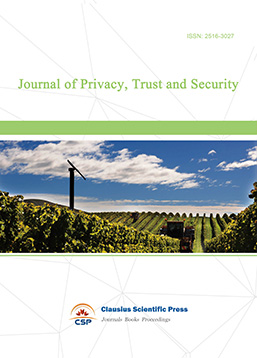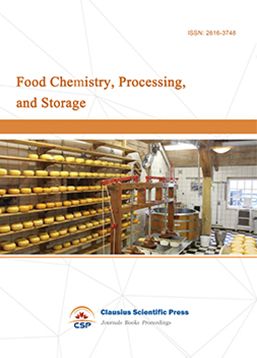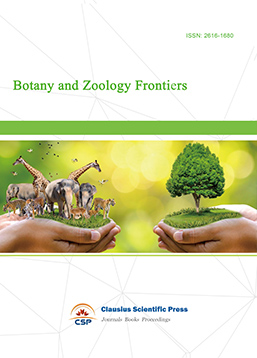The Development Status and Influencing Factors of Genetically Modified Food
DOI: 10.23977/jmcs.2022.010106 | Downloads: 45 | Views: 3198
Author(s)
Pengju Liu 1, Ying Chen 2, Jing Guan 2, Weizhe Sun 1, Shuang Jiang 1
Affiliation(s)
1 Department of Health Management, Changchun University of Chinese Medicine, Changchun, Jilin, China
2 Department of Department of Clinical Medicine, Changchun University of Chinese Medicine, Changchun, Jilin, China
Corresponding Author
Shuang JiangABSTRACT
With the progress of science and technology, genetic modification technology has seen rapid development, and genetically modified foods have been invented in this context. Genetically modified (GM) food has been controversial since it came out. Some people think that genetically modified food is the product of the development trend of science and technology, and we should accept and vigorously develop it. However, some people believe that GM food is not naturally produced and may be harmful to human health. In this paper, the development status, influencing factors, advantages and potential hazards of transgenic food at home and abroad are analyzed and discussed, and the development direction of transgenic food in China in the future is proposed.
KEYWORDS
Genetically modified foods, transgenic crops, advantage, potential hazardsCITE THIS PAPER
Pengju Liu, Ying Chen, Jing Guan, Weizhe Sun, Shuang Jiang, The Development Status and Influencing Factors of Genetically Modified Food. Journal of Modern Crop Science (2022) Vol. 1: 50-58. DOI: http://dx.doi.org/10.23977/jmcs.2022.010106.
REFERENCES
[1] Bawa, A.S. and K.R. Anilakumar, Genetically modified foods: safety, risks and public concerns-a review. J Food Sci Technol, 2013. 50 (6): p. 1035-46.
[2] Hwang, H. and S.J. Nam, The influence of consumers' knowledge on their responses to genetically modified foods. GM Crops Food, 2021. 12 (1): p. 146-157.
[3] Lassen, J., K.H. Madsen and P. Sandøe, Ethics and genetic engineering – lessons to be learned from GM foods. Bioprocess and Biosystems Engineering, 2002. 24 (5): p. 263-271.
[4] Szabala, B.M., P. Osipowski and S. Malepszy, Transgenic crops: the present state and new ways of genetic modification. J Appl Genet, 2014. 55 (3): p. 287-94.
[5] Wang, X. and S. Jia, [Comparison of commercialization of transgenic crops in China and world-wide]. Sheng Wu Gong Cheng Xue Bao, 2008. 24 (4): p. 541-6.
[6] Tsatsakis, A.M., et al., Impact on environment, ecosystem, diversity and health from culturing and using GMOs as feed and food. Food Chem Toxicol, 2017. 107 (Pt A): p. 108-121.
[7] Phillips T. Genetically modified organisms (GMOs): transgenic crops and recombinant DNA technology. Nat Educ. 2008; 1:213.
[8] Klumper, W. and M. Qaim, A meta-analysis of the impacts of genetically modified crops. PLoS One, 2014. 9 (11): p. e111629.
[9] Brookes, G. and P. Barfoot, Environmental impacts of genetically modified (GM) crop use 1996-2013: Impacts on pesticide use and carbon emissions. GM Crops Food, 2015. 6 (2): p. 103-33.
[10] Barfoot, P. and G. Brookes, Key global environmental impacts of genetically modified (GM) crop use 1996-2012. GM Crops Food, 2014. 5 (2): p. 149-60.
[11] Wang, C., et al., Enhanced expression of phospholipase C 1 (ZmPLC1) improves drought tolerance in transgenic maize. Planta, 2008. 227 (5): p. 1127-1140.
[12] Wang, X., et al., Genetic variation in ZmVPP1 contributes to drought tolerance in maize seedlings. Nat Genet, 2016. 48 (10): p. 1233-41.
[13] Malenica, N., et al., Genetic Approaches to Enhance Multiple Stress Tolerance in Maize. Genes (Basel), 2021. 12 (11).
[14] Bouis, H.E., B.M. Chassy and J.O. Ochanda, 2. Genetically modified food crops and their contribution to human nutrition and food quality. Trends in Food Science & Technology, 2003. 14 (5-8): p. 191-209.
[15] Olesen, J.E., et al., Modelling greenhouse gas emissions from European conventional and organic dairy farms. Agriculture Ecosystems & Environment, 2006. 112 (2): p. 207-220.
[16]. Brookes, G., Genetically Modified (GM) Crop Use 1996-2020: Impacts on Carbon Emissions. GM Crops Food, 2022. 13 (1): p. 242-261.
[17] Datta, K., et al., Bioengineered 'golden' indica rice cultivars with beta-carotene metabolism in the endosperm with hygromycin and mannose selection systems. Plant Biotechnol J, 2003. 1 (2): p. 81-90.
[18] Waltz, E., Nonbrowning GM apple cleared for market. Nat Biotechnol, 2015. 33 (4): p. 326-7.
[19] Lassoued, R., et al., Expert opinions on the regulation of plant genome editing. Plant Biotechnol J, 2021. 19 (6): p. 1104-1109.
[20] Haslberger, A.G., Policy forum: genetic technologies. Monitoring and labeling for genetically modified products. Science, 2000. 287 (5452): p. 431-2.
[21] Pontiroli, A., et al., Fate of transgenic plant DNA in the environment. Environ Biosafety Res, 2007. 6(1-2): p. 15-35.
[22] Huo, L. and Y. Liu, Genetically Modified Rice: Do Chinese Consumers Support or Go Against It? Based on the Perspectives of Perceived Risk and Trust. Front Psychol, 2022. 13: p. 813862.
[23] Xu, R., Y. Wu and J. Luan, Consumer-perceived risks of genetically modified food in China. Appetite, 2020. 147: p. 104520.
[24] Li, L. and J.R. Bautista, Examining Personal and Media Factors Associated with Attitude towards Genetically Modified Foods among University Students in Kunming, China. Int J Environ Res Public Health, 2019. 16 (23).
[25] Shewry, P.R., H.D. Jones and N.G. Halford, Plant biotechnology: transgenic crops. Adv Biochem Eng Biotechnol, 2008. 111: p. 149-86.
[26] Karalis, D.T., et al., Genetically Modified Products, Perspectives and Challenges. Cureus, 2020. 12 (3): p. e7306.
[27] Lucht, J.M., Public Acceptance of Plant Biotechnology and GM Crops. Viruses, 2015. 7 (8): p. 4254-81.
[28] Turnbull, C., M. Lillemo and T. Hvoslef-Eide, Global Regulation of Genetically Modified Crops Amid the Gene Edited Crop Boom - A Review. Front Plant Sci, 2021. 12: p. 630396.
[29] Entine, J., et al., Regulatory approaches for genome edited agricultural plants in select countries and jurisdictions around the world. Transgenic Res, 2021. 30 (4): p. 551-584.
[30] Farid, M., et al., Exploring Factors Affecting the Acceptance of Genetically Edited Food Among Youth in Japan. Int J Environ Res Public Health, 2020. 17 (8).
[31] Du L. GMO Labelling and the Consumer’s Right to Know: A Comparative Review of the Legal Bases for the Consumer’s Right to Genetically Modified Food Labelling. McGill J. Law Health. 2014; 8:1–42.
| Downloads: | 698 |
|---|---|
| Visits: | 55254 |

 Download as PDF
Download as PDF